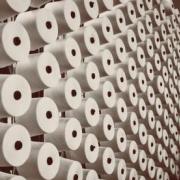 The basic element of nonwovens are fibers. Each process also leads to a different range of fabric properties, all available fibers cannot be used equally well in all nonwoven processes. It is the selection of fibers that largely determines the properties of the final nonwoven products. The selection of fibers also depend on customer requirement, cost, process ability, changes of properties because of web formation and consolidation.
The basic element of nonwovens are fibers. Each process also leads to a different range of fabric properties, all available fibers cannot be used equally well in all nonwoven processes. It is the selection of fibers that largely determines the properties of the final nonwoven products. The selection of fibers also depend on customer requirement, cost, process ability, changes of properties because of web formation and consolidation.
Although commercially important nonwoven fabrics have been limited to relatively few types there are many more that are suitable for nonwovens including wood pulp, cotton, rayon, acetate, and viscose etc. The dominant fibers include polyolefins, polyester, and rayon. These three fiber types make up a substantial part of the overall nonwovens markets for fibers. The fibers can be in the form of filament, staple fiber or even yarn.
| POLYESTER | POLYPROPYLENE | RAYON | NYLON | POLYETHYLENE |
|---|---|---|---|---|
|
|
|
|
|
PP fibers are not only inexpensive, but are hydrophobic, voluminous, and thermoplastic in nature. Polyethylene terephthalate (PET) is used where strength and mechanical properties are of prime importance. Nylon fibers are used for their excellent recovery (resiliency) properties. Bicomponent fibers with different polymers in the core and sheath are widely used in thermally bonded nonwovens.
SAMPLE APPLICATIONS
| POLYESTER | POLYPROPYLENE | RAYON | NYLON | POLYETHYLENE |
|---|---|---|---|---|
|
|
|
|
|
